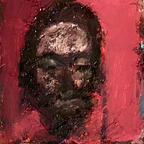Goodbye “Art,” Hello “Content”!
My friend Chris was in the passenger seat, scrolling through his Instagram, while I drove us to our usual breakfast spot.
“I think you’re addicted to that app,” I said — partly joking, partly not.
“Oh, definitely. But I don’t use it as a social media. It’s more of a way for me to get inspiration. I mean, look at this.” He showed me a photo of a model, with long latex-clad legs and a powdered white face, leaning back in a chair, her mouth slightly open and her hands on her thighs, framing her crotch.
Inspiration for what? Chris was someone who I’d always been able discuss the arts with, but was never very inclined to engage in any artistic pursuits himself. His primary creative outlet, if you could call it that, was buying designer clothes with his parents’ money, and choosing between various combinations of how he’d wear those clothes. Chris was looking at Instagram photos so that he could put together better outfits. And he wanted to put together better outfits so that he could take Instagram photos of them. It was a feedback loop, continuously propagating overpriced garments.
If I’m being honest, though, my own Instagram habits may not be so different. I follow hundreds of painters, galleries, and museums on the app — giving me the feeling of productivity and enrichment while I’m endlessly scrolling. But if the seminal media theorist Marshall McLuhan was right, what you look at on Instagram doesn’t matter: the medium is the message.
McLuhan, in his book Understanding Media, argues that “the ‘message’ of any medium or technology is the change of scale or pace or pattern that it introduces into human affairs,” and that “it is the medium that shapes and controls the scale and form of human association and action.” Though images of fashion photography and images of paintings may be in different genres, their side-by-side existence on Instagram proves that they belong, after all, to the same medium. Their image sizes and ratios are the same. The formatting permissions and restrictions that dictate how users can respond the posts (via “likes” and comments) are the same. The speed at which users scroll past the images are, one can assume, the same. And if a user follows several different types of accounts, as many do, these various genres of content will doubtlessly be mixed together in the seamless flow of his personal feed.
In addition to the inherent differences between the physical existence of a painting and its digital reproduction on Instagram, the surrounding contexts of the two media heavily alter how viewers engage with them. When one makes a pilgrimage to an art museum, purchases his ticket, and checks his coat — all before even being able to see a single artwork— he has built up a level of expectation. He knows that much attention has been paid to conserving, arranging, lighting, protecting, and funding these artworks. To check Instagram, on the other hand, all he has to do is take out his phone and tap it a few times. He knows implicitly that the images he sees have been arranged by an algorithm — not by a human being with thoughtful intentions. Thus, it is impossible to have same experience seeing an artwork on Instagram as he would have seeing the same artwork in person.
This applies to poetry posted to Instagram as well. When I purchase a book of poetry, read a poetry journal, or check out a book of poems from my local library, I make the automatic assumption that what I’m reading has been composed, edited, and heavily vetted by experts (or, at least, by relatively competent people). Reading poetry on a social media app, on the other hand, is a wholly different experience. I experience it less as a “made thing” — an object that’s been deliberately and lovingly crafted to communicate something deep about what it is to be human — and more as yet another brief distraction. No matter how thought-provoking, or aesthetically pleasing any poem on Instagram may be, I cannot divorce it from the medium through which it’s communicated to me.
I’m aware of the irony of my making this statement, given that I’m posting this article to Medium, a website that’s not too different from other social media, despite its proclaimed focus on helping its users “find compelling ideas, knowledge, and perspectives.”
The truth is that, as a creative person, there’s more immediate gratification in creating “content” than there is in creating “art.” Art may be a more prestigious ideal, but after creating it, you’ll have to face requisite rigamarole of dealing with institutions. After all, according to philosopher George Dickie, a work of art is “1) an artifact 2) on which some person or persons acting on behalf of a certain social institution (the artworld) has conferred the status of candidate for appreciation.” Likewise, a work of literature confers its status from the “literary world” — publishers, bookstores, libraries, and academia.
Then again, distributing content via more democratic platforms involves interacting with institutions as well. That is, the institutions of websites like Instagram or YouTube or Medium. The only difference is that, for traditional artistic and literary institutions, the barrier to entry is the conscious permission of a few people, whereas, on the social internet, the barrier to entry is the attention of a crowd. This may not be a “barrier to entry” in the traditional sense, but if no one is paying attention to what you upload, it’s not much different than being denied entry in the first place.
The question is, though, whether these democratic forms of distribution lead to higher quality of work, or merely to more attention-grabbing or share-able work.
My money’s on the latter.
